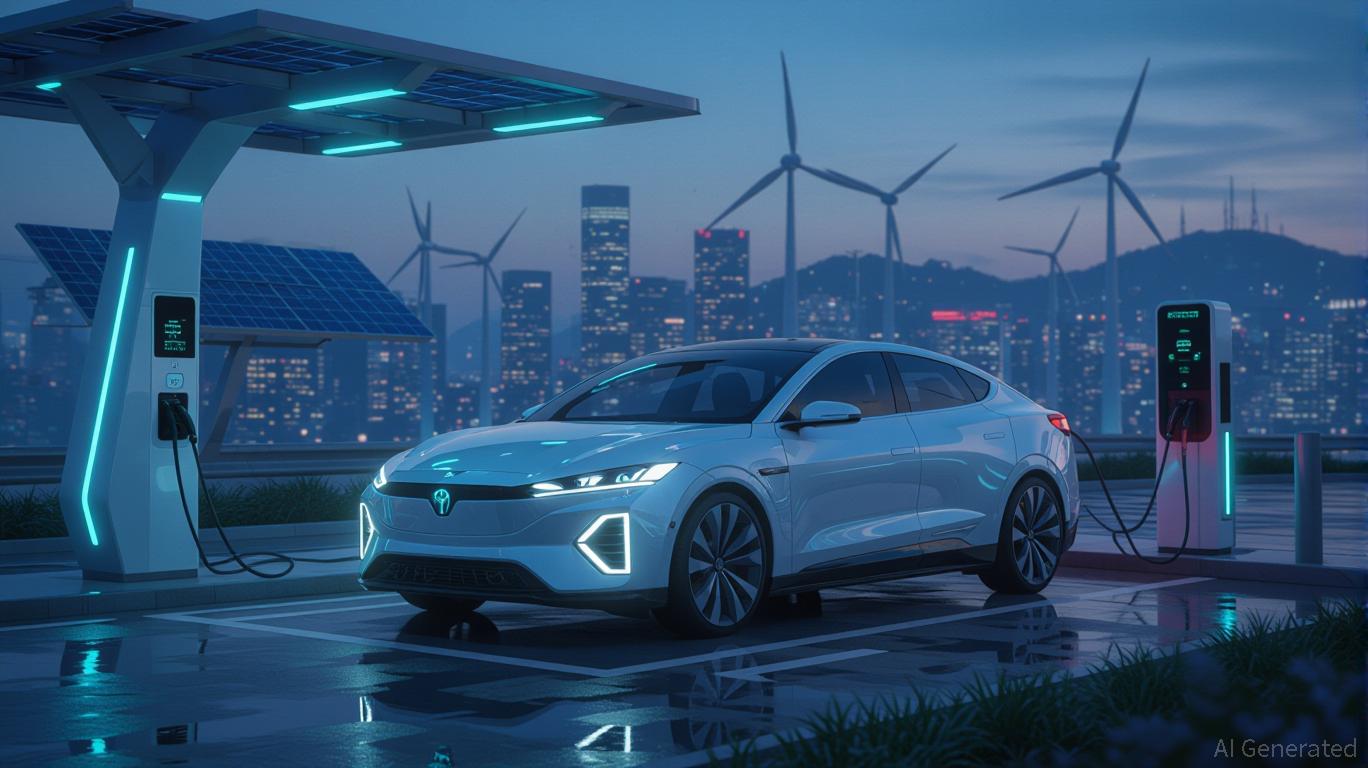South Korea’s hybrid vehicle market is surging toward a transformative future, driven by a confluence of government ambition, technological innovation, and shifting consumer priorities. With the global push for decarbonization accelerating, the country’s automotive sector is positioning itself as a critical player in the race for sustainable mobility. For investors, this represents a golden opportunity to capitalize on a market poised for exponential growth—and to align portfolios with the long-term trajectory of eco-friendly transportation.
A Market on the Fast Track
The hybrid vehicle market in South Korea is projected to balloon from USD 8 billion in 2024 to USD 18 billion by 2033, fueled by a compound annual growth rate (CAGR) of 11.0%. This trajectory is underpinned by aggressive government incentives, including tax breaks and subsidies for hybrid and plug-in hybrid electric vehicles (PHEVs). By 2033, the hybrid cars segment alone is forecasted to grow at a blistering 14.4% CAGR, reflecting a strategic pivot toward low-emission vehicles.
The government’s 2050 net-zero emissions goal is a linchpin of this growth. Policies such as stricter battery safety regulations and mandatory EV performance testing, introduced in early 2025, are not only enhancing consumer trust but also setting a high bar for technological excellence. These measures are critical in addressing lingering concerns about battery safety and range anxiety, two hurdles that have historically slowed EV adoption.
Strategic Moves by Industry Leaders
South Korea’s automotive giants, Hyundai and Kia, are leading the charge. Hyundai’s Ioniq and Kona Electric models have become benchmarks for hybrid innovation, while Kia’s Niro EV is gaining traction with its blend of efficiency and affordability. Both companies are investing heavily in AI-driven systems to optimize fuel efficiency and predictive maintenance, a trend that could redefine the hybrid ownership experience.
Meanwhile, battery suppliers like LG Chem and Samsung SDI are doubling down on lithium-ion technology, ensuring cost-effective and high-performance power solutions. These firms are not just supplying batteries but also collaborating with automakers to design integrated systems that enhance vehicle longevity and recyclability—a key factor in the circular economy.
Infrastructure providers are equally pivotal. The South Korean government’s USD 448 million allocation for EV charging stations in 2025—a 43% year-on-year increase—signals a commitment to eroding range anxiety. Fast-charging networks in urban hubs are expanding rapidly, supported by revised subsidy rules that prioritize real-time battery monitoring and safety compliance.

Global Collaborations and Market Expansion
South Korea’s strategy isn’t confined to domestic efforts. The country is fostering partnerships with U.S. automakers and tech firms to co-develop advanced safety systems and battery technologies. These collaborations are opening doors for foreign investors to tap into South Korea’s R&D ecosystem, which is increasingly viewed as a global innovation hub.
Mergers and acquisitions (M&A) are also reshaping the landscape. Automakers and battery manufacturers are acquiring smaller firms to fast-track access to cutting-edge technologies, from solid-state batteries to AI-driven diagnostics. This consolidation is likely to create a few dominant players, offering investors a clear path to bet on market leaders.
Investment Implications and Strategic Positioning
For long-term investors, South Korea’s hybrid vehicle market offers a dual opportunity: capitalizing on a rapidly growing sector while aligning with global sustainability goals. Here’s how to position a portfolio:
Automakers with Hybrid Expertise: Prioritize companies like Hyundai and Kia, which are not only scaling production but also integrating AI and precision engineering to differentiate their offerings. Battery and Component Suppliers: LG Chem and Samsung SDI are critical to the hybrid value chain. Their ability to innovate in battery recyclability and cost reduction will determine their long-term competitiveness. Infrastructure Providers: Firms involved in EV charging networks stand to benefit from government-led expansion. Look for companies with partnerships in urban infrastructure projects. Circular Economy Firms: As sustainability becomes non-negotiable, companies specializing in vehicle recycling and material reuse will gain traction. The Road Ahead
While the market’s growth is undeniable, risks remain. Global supply chain disruptions, regulatory shifts, and the rise of fully electric vehicles (EVs) could temper hybrid adoption. However, hybrids remain a pragmatic bridge to full electrification, particularly in markets where charging infrastructure is still evolving.
For investors, the key is to balance exposure to high-growth hybrids with forward-looking bets on EVs. South Korea’s ecosystem—anchored by government support, technological agility, and a culture of innovation—offers a unique vantage point to navigate these dynamics.
In conclusion, South Korea’s hybrid vehicle market is not just a regional story—it’s a blueprint for the future of sustainable mobility. By investing in its leading players and infrastructure, investors can position themselves at the forefront of a green revolution that’s reshaping the automotive world.
